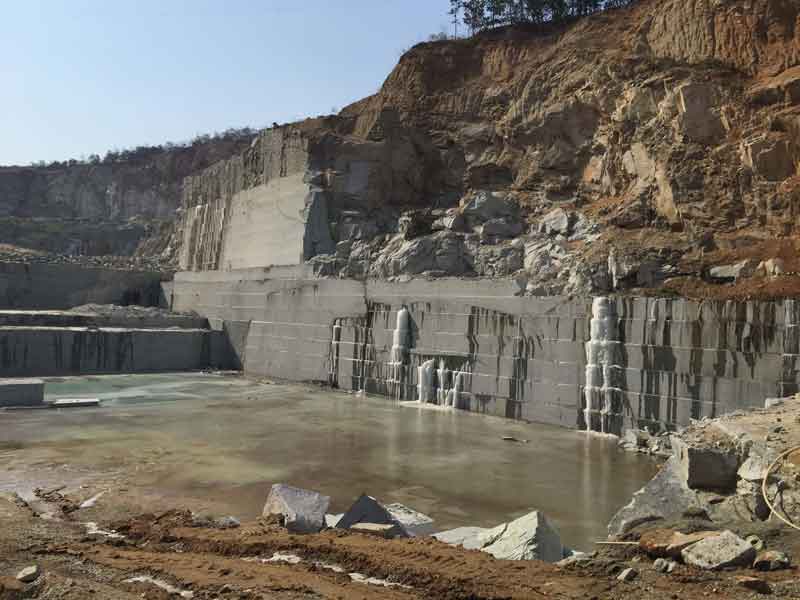Unearthing the Rich Background and Lasting Practices of Granite Quarrying
As we base on the precipice of discovering the elaborate tapestry of granite quarrying, a trip via time reveals not simply the physical act of extracting rock yet also the social and historical relevance woven right into the very material of this technique. From the old origins that laid the structure for modern-day quarrying techniques to the sustainable practices that are shaping the future of this market, each carve mark on granite surface areas tells a story waiting to be uncovered (granite quarries in south africa). The legacy of granite quarrying stretches much past mere removal; it is a testimony to human resourcefulness, resilience, and the long-lasting allure of this impressive stone
Ancient Beginnings of Granite Quarrying
Going back to ancient people, the method of quarrying granite has actually been an integral part of human history and building improvement. The earliest evidence of granite quarrying go back to ancient Egypt, where enormous pyramids and detailed sculptures were crafted from this sturdy stone. The Egyptians utilized primitive devices to extract granite blocks from quarries, showcasing the importance of this material in their monumental building and constructions.
Moving onward in history, the Greeks additionally made significant payments to the quarrying of granite. The Greeks used granite in various architectural wonders, such as temples and statuaries, showing their ability in shaping and sculpting this sturdy rock. The Romans additionally refined the strategies of quarrying granite, employing innovative devices like blades and hammers to remove and shape granite for their famous structures.
Via the centuries, the method of quarrying granite has advanced, with modern-day technologies boosting performance while preserving the classic charm of this all-natural rock - granite quarries in south africa. From ancient civilizations to modern builders, the tradition of granite quarrying remains to form our world
Advancement of Quarrying Methods
The evolution of quarrying strategies has been noted by a continual progression in the direction of greater effectiveness and precision in drawing out granite. Early quarrying strategies involved hand-operated labor with basic tools such as knives, hammers, and wedges to extract granite blocks from the earth.
In more current times, the introduction of equipment reinvented the quarrying sector, enabling faster removal rates and boosted efficiency. Technologies such as diamond cord saws, high-pressure water jets, and pneumatically-driven drills have come to be conventional in modern-day quarries, permitting accurate cutting and minimized waste. Furthermore, improvements in computer-controlled tools and 3D modeling have actually optimized quarrying operations, causing marginal ecological influence and improved sustainability practices. As the need for granite proceeds to climb, the evolution of quarrying techniques remains essential to meeting industry needs efficiently and sustainably.
Social Value of Granite
Granite holds an extensive social relevance across various civilizations as a result of its long-lasting existence in architectural masterpieces and prized monoliths. From the marvelous pyramids of Egypt to the complex carvings of the Angkor Wat holy place in Cambodia, granite has actually been a material of choice for sharing magnificence and durability in social heritage. In old Rome, granite columns adorned temples and public structures, representing stamina and permanence. The cultural significance of granite prolongs past its physical attributes; it personifies durability, stability, and eternity, making it a sign of sustaining traditions and traditions.

Sustainable Practices in Quarrying
Amidst the abundant background of granite quarrying and its cultural significance exists a growing focus on lasting practices within the sector. As ecological awareness and problems regarding resource deficiency have heightened around the world, the quarrying industry has significantly embraced lasting techniques click this site to minimize its effect on the environment and bordering communities.

Furthermore, reclamation and rehabilitation of quarry sites post-extraction are integral to sustainable techniques. By recovering quarried locations to an all-natural or valuable state, such as producing wild animals environments or leisure areas, quarriers can offset the environmental impact of their procedures and add positively to the local community.
Legacy of Granite Quarrying
With a historic background steeped in workmanship and commercial development, what withstanding impact has granite quarrying left on the landscape of contemporary culture? The heritage of granite quarrying goes beyond you can find out more plain removal methods; it has actually formed building marvels, metropolitan landscapes, and cultural heritage worldwide. The resilient nature of granite has actually made it a preferred option for monuments, structures, and infrastructure, standing as a testament to the skill and creativity of quarry employees across generations.
Additionally, the financial footprint of granite quarrying can not be neglected. The market proceeds to offer job opportunity and drive neighborhood economic climates in more helpful hints regions where granite extraction is prevalent. It has additionally stimulated technical innovations in quarrying methods and tools, causing extra reliable and sustainable techniques.
In terms of sustainability, the tradition of granite quarrying consists of initiatives to mitigate environmental effects with improvement tasks and liable source management. By stabilizing economic interests with environmental stewardship, the sector makes every effort to make sure that future generations can remain to gain from this enduring all-natural resource.
Conclusion
